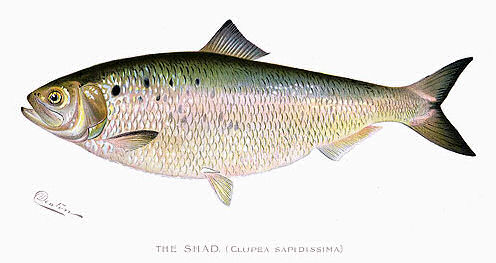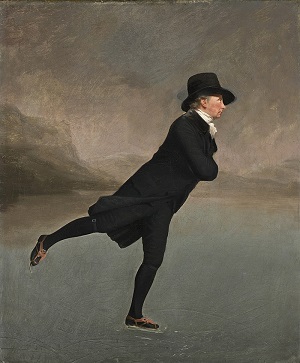Petty's Island

Sadly, the late great Tom Petty has nothing to do with Petty's Island
Photo by davidwbaker
Licence
Petty's Island, or Shackamaxon Island as it was originally known and patented in 1684 by Thomas Fairman, who lived opposite to it at "Pyne Point" (between Cooper's Point and Cooper's Creek). At Friend Fairman's house very frequently meetings of the Society of Friends were held, and in this house William Penn spent his first winter. "Pyne Point," while little known by Philadelphians, is also memorable as the landing place of Benjamin Franklin before he entered Philadelphia. Landing at Burlington by foot, from New York, walking by the shore, a boat came by, on its way to Philadelphia, with several people aboard. As there was no wind they rowed all the way down, and during the night they entered the cove. The tide was the strongest on the New Jersey side. About midnight, not seeing the city, probably obscured by Petty's Island, some of the company were confident that they passed Philadelphia, and would row no further; so they put toward the shore, getting into Cooper's Creek at "Pyne Point." They weighed anchor and landed at Market Street Wharf on a Sunday morning.
In 1654 Peter Lindestrom, a young Swede, who explored the Delaware from the falls to the capes in the interest of the Royal Commercial College of Sweden, named Petty's Island "Aequikenaska." He pictured the region about Quinkoringh (Cooper's Point) as "Beautiful flat and level land, but entirely inconvenient for reaching the shore with vessels on account of the shallow of the river (Petty's) entirely covered with reeds."

The Delaware shad he mentions as "a very fine flavored and excellent tasting fish." Catfish he describes as sweet tasting "like a tench."
Petty's Island was placed under the jurisdiction of New Jersey shortly after the Revolutionary War, when Smith's and Windmill Islands were assigned to Pennsylvania. After Friend Fairman's death the island passed to John Petty, whose name it has retained, although the Mandersons, when they came into possession of the greater portion of the property in 1852, named it Treaty Island, but were unsuccessful in obtaining official recognition of the change, as the government recognized the old name in authorizing later channel improvements.
The greater part of the island was for a long time owned by the Cooper family, of Camden, who at different times sold or bequeathed portions of it to other parties. The Mandersons, who were in the lumber business in 1852 at Shackamaxon Street Wharf, coming into possession of two large tracts.
The Mandersons owned considerable property in the vicinity of Shackamaxon, Beach and Laurel Streets. On the west side of Beach Street, there were, in the recollection of the writer, stately old-time mansions. The writer frequently called on S. B. Manderson, one of the sons, who latterly resided on Eleventh Street, adjoining the Webster School, above Girard Avenue, who often related to him concerning events in Kensington, notably in the neighborhood of the "Screw-Dock."

William Cramp
1896, Artist unknown
William Cramp, the founder of the famous shipbuilding firm, at one time had his shipyard on Petty's Island. He was followed by Henry Simons, the wagon builder, who had a mill there; by Doughty and Kappella, boat builders; John H. Dialogue, shipwright, and Donaghy & Rilat, marine railway.
In 1880, John F. Betz, the brewer, rented that portion between the point (northern) and the thoroughfare, planting numerous willow trees there and calling it "Willow Grove." A resort mainly for dancing and drinking, frequented only by a certain class of sports from Richmond, there were too many brawls there, and the better class of young people stayed away. After a couple of seasons the project was given up, leaving behind a shady grove, used by boating parties as a cap to cook their meals.
When the tide was high a low portion of the island about 500 yards west of the point would be submerged and used extensively by game bird hunters and fishermen. In the fall of the year the hunters who often kept their "duckers" equipped with a sail on Miller's Slip, at Shackamaxon Street, Robin's Slip at Marlborough Street, Nixon's, at Hanover Street, Allen's or Faunce's Slip at Otis Street, would pursue geese, ducks and other waterfowl. In the spring, they switched from birds to fish, especially shad. In the summer, using nets with a smaller mesh, they would go after herring. Up until the end of the 20th century, few homes in Fishtown didn't have a cask of herring in the cellar.
In 1900, the following owned parcels of land:
- American Dredging Co.
- Elizabeth Collins
- M.C. Cope
- J.J. Hatch
- M.A.C. Morris
- Andrew Manderson
- James Manderson
- John Manderson
- N.Y. Dredging Co.
- Dr. J. Pancoast
- J. Rilat
In 1882, roughly 23 acres on the western side were cut away and bulkheads inserted to widen and deepen the ship channel. Subsequently, at the lower end, about 50 acres were cut off.
Previous to the point of the island being improved, i.e., bulkheads inserted, the writer, while a youth, often with companions, would gather calamus there, the whole point a veritable bed of calamus, fed by the tides.

In the winter of 1877 the river was frozen over, and gleeful Philadelphians crossed to New Jersey, or skated and frolicked on the ice. A number of yachtsmen from Allen's Slip rigged up ice-yacht's, sailing around the cove, especially in the part between Cooper's Point and the island. One notorious character of Fishtown, known as "Dad Flick," who kept a saloon at the head of Allen's Slip, opened a booth on the ice, for the sale of liquid refreshments; another "Fishtowner" came up and said jestingly, "Dad, give me a glass of ale." "Can't do it, Sam, I've got water in the cellar.' (Ale was always kept in the cellar).


